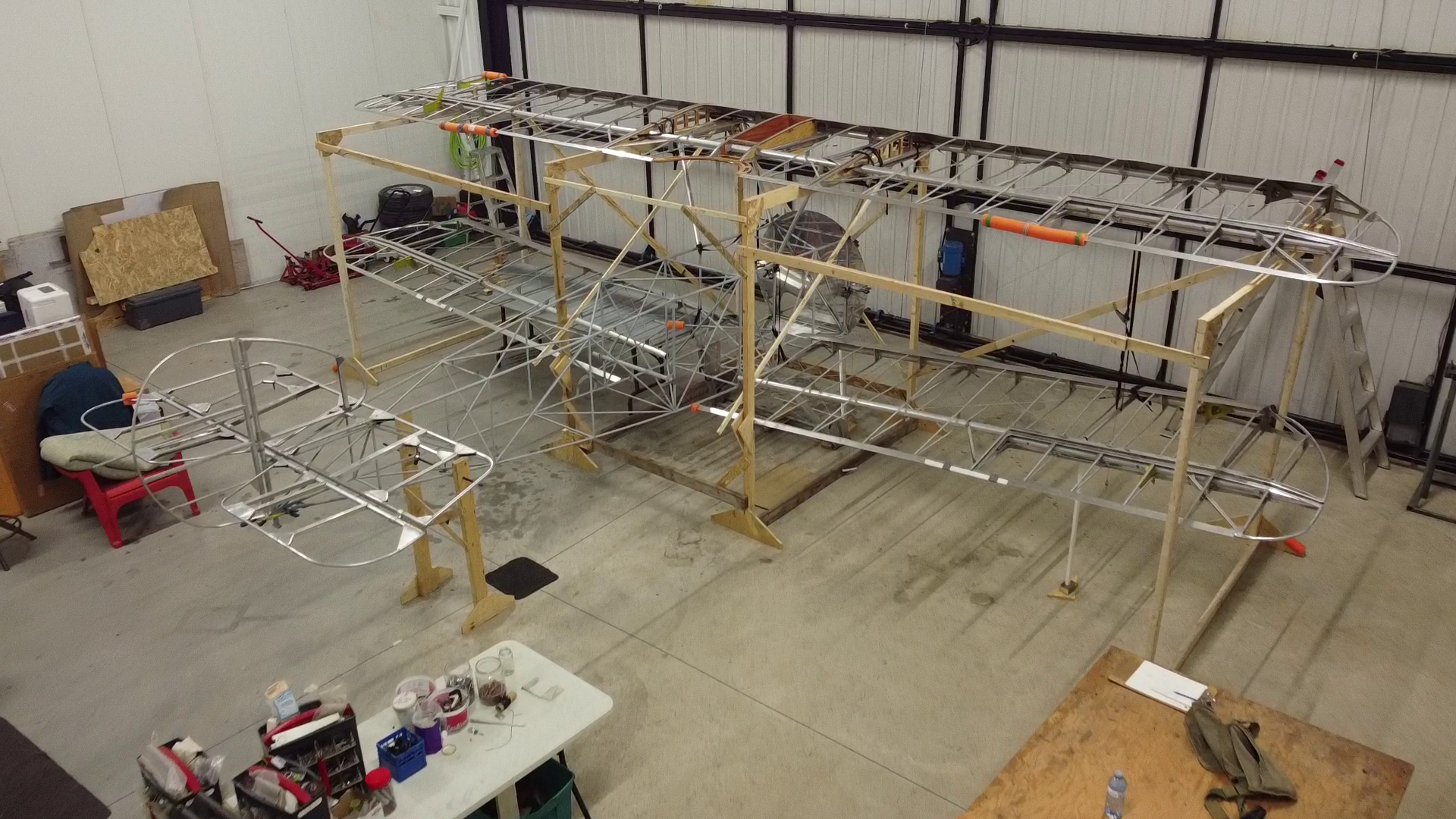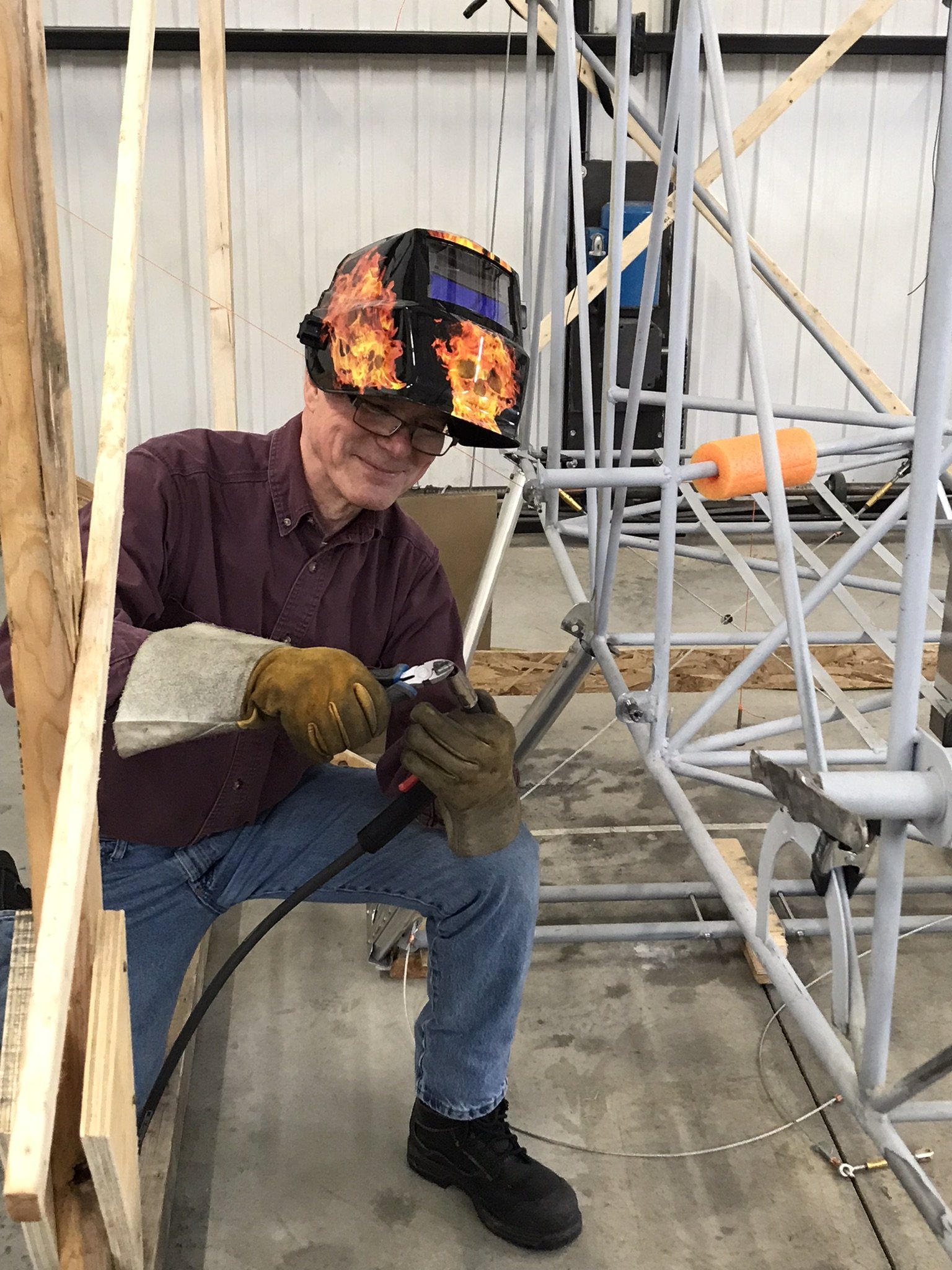Building Dreams: An Interview with a DIY Plane Enthusiast and Skydiver
Written by Valiski Bernard
Have you ever dreamt of flying your own plane? Or perhaps jumping out of one? Maybe even building one from scratch? Sounds impossible, right? Well, not for Greg Shepherd, a passionate hobbyist who decided to take on the challenge of building his own replica of a World War 1 fighter plane. In this blog post, we’ll share the amazing story of how he turned his dream into reality despite the obstacles, doubts, and naysayers. You’ll learn how he found his inspiration, managed his time and budget, and overcame the technical and emotional difficulties of such a complex and ambitious project. You’ll also discover his advice for anyone who wants to start their own side hustle, new business, or hobby. Whether you’re interested in aviation, history, or entrepreneurship, you’ll find this interview inspiring, informative, and entertaining. So buckle up and get ready to soar with Greg, the plane builder and skydiver.
Greg reflects on the evolution of his aircraft-building dream, noting that it began more as a desire to own a single-seat Fighter rather than a specific timeline for building a plane. He acknowledged the high cost associated with single-seat Fighters, which prompted him to explore various options before settling on the Royal Naval Air Service Camel 2F.1, also known as The Ship’s Camel. This choice was influenced by a personal tragedy, the loss of his older son, which led him to reevaluate his passions and seek solace in skydiving and airplanes.
Aside from his remarkable aircraft-building endeavors, Greg is also a licensed coach with the Canadian Sport Parachuting Association. His focus lies in coaching licensed skydivers to enhance their large-formation freefall skills, a practice known as Organizing. He also dedicates time to providing one-on-one instruction to aspiring parachutists working towards their licenses. While he does not pursue the role of a Tandem Master, he holds deep respect for those in the discipline and acknowledges the rigorous training they undergo to obtain their licenses. This commitment to coaching and mentoring in the skydiving community showcases Greg's passion for sharing his expertise and fostering growth in others within the sport. Let's dive right in and explore the details of this insightful interview.
Bobby and Greg
Plane Building
Choosing The Ship’s Camel
“I presented a number of pictures of these planes to my daughter and asked a simple question: “Which one of these do you like?” She pointed at The Ship’s Camel, and so the decision was “a fait accompli.” To be honest, I’m pretty sure she chose The Ship’s Camel because of the blue and white livery. Regardless, it was a great choice because this particular version of the Sopwith Camel hasn’t been built since World War 1, there are no plans available specific to this version of the Camel, and it has proved to be a fascinating research project.”
Managing Naysayers
Despite facing skepticism from others, Greg remained undeterred, focusing on how to make the project successful. He emphasized the significance of obtaining the essential skills needed for his endeavor.
“I ignored them because I had done the preparatory work to confidently take on this project. I had the motivation, the time, the budget, and the infrastructure that I needed to be successful. I was lacking in certain skill sets, so I returned to school and took the Aircraft Mechanics Course and, while doing so, asked one of the local aircraft maintenance shops if I could work there as an unpaid intern apprentice, which I did for five months. While working there, I found a wonderful gentleman (named Bobby) with incredible metallurgical skills, and he followed me into this project. Bobby’s still with me today, and he’s become the backbone of this Build. In the aviation community, the only times you will find naysayers will be when there’s a safety issue. And there are no safety issues on this project so far. My aviation peer group thought that this was a great idea, and they’ve provided me with a lot of moral support.”
Defining Success and Priorotisng Self Care
Greg defines success in a refreshingly simple yet profound manner: if his activities have positively impacted others, then he considers himself successful. This altruistic approach underscores his commitment to making a meaningful difference in the lives of those around him, reflecting a deep sense of purpose and compassion.
Regarding self-care and mental health, Greg prioritises personal happiness as a cornerstone for contributing to the well-being of others. He believes that his value to others is intricately linked to his own happiness and fulfillment. This philosophy guides his choices, leading him to work only in environments that bring him joy and align with his ethical principles. By prioritizing his own serenity and well-being, Greg sets an inspiring example of how self-care is not only essential for personal happiness but also for positively impacting the world around us.
“I am a firm believer that you are of no value to anyone else if you are not happy with your own life. And the best way to be happy within yourself is to pursue those activities that bring cheerfulness and fulfillment into your life. I only work within environments that I enjoy, and I live within an ethical code that allows me to smile at the end of the day and sleep well at night. You cannot put a dollar value on serenity.”
Skydiving
When faced with someone terrified of jumping out of a plane, Greg offers a compassionate and practical approach. He appeals to their higher self, acknowledging their fear as a natural part of the process. He encourages them to embrace the adrenaline and offers reassurance by highlighting the safety measures in place, including the expertise of the Tandem Master (at least 3 years of experience skydiving, minimum of 500 skydives, and a master parachute license) and the backup systems within their parachutes. His advice is to remain aware of your surroundings and to focus on the experience, with the reassurance that it's all part of the thrill.
Greg relies on his experience and meticulous preparation to calm his nerves before a jump. With over 1,700 jumps under his belt and an aviation/engineering background, he is very "checklist-oriented." He ensures all safety checks are completed, mentally visualizes the jump, and addresses any final questions from fellow jumpers. This routine prepares him for the jump and reflects his commitment to safety and professionalism in the sport.
For Greg, the feeling of jumping out of an airplane is indescribable. This unique sensation is one of the aspects that draws him to skydiving. He compares this feeling to the sense of accomplishment he feels in building his plane, noting that both experiences offer opportunities for growth and improvement, whether things go according to plan or not.
“I love this short period of time as the body accelerates in the vertical, and I see the faces of my friends as we come together in freefall. But the overall feeling between the two activities correlates nicely in that if things go well, then there’s a real sense of accomplishment, and if things don’t go well, then there’s a great opportunity to gather lessons learned from the experience that leads to improvement.”
Future Plans
While the completion of the plane is still some years away, Greg is hopeful to start taxi tests towards the end of 2025, showcasing his commitment to seeing his dream come to fruition.
“We are continually asked, “When will you fly this airplane?”. We don’t have a first-flight date yet: we’ve got four years and about 3,600 hours into this project so far; we probably have another three years and 2,500 hours ahead of us. Ball Park, if all the stars line up, we’re hoping to start taxi tests towards the end of 2025 … but again, who really knows.”
Lessons for Aspiring Entrepreneurs
Drawing parallels between his plane-building journey and entrepreneurship, Greg emphasized the importance of selecting and maintaining the Aim, having a well-thought-out contingency plan, and practicing patience.
“The cavalier answer to this question would be to quote the old Nike commercial, “Just do it.” And certainly, this does apply. However, no one should ever underestimate the planning process and the sheer guts it takes to start a new project where cold-hard-cash and a lot of time are involved. So here are three thoughts that I would pass on to anyone who is thinking of moving in a new direction.
General Carl von Clausewitz was a brilliant Prussian general who wrote “The Ten Principles of War” in 1832. His first Principle of War, to paraphrase, stated that to be successful in any operation, it is mandatory to “Select and Maintain the Aim.” I have often said that the selection of the Aim is simple, but the maintenance of the Aim will test one’s resolve. Accordingly, figure out what you want to do (or select your Aim), make sure you really want to do it, and then figure out how you're going to Maintain that Aim with a rock-solid plan. We have all heard the expression, “Fail to plan, plan to fail.” this is a truism to which every entrepreneur and successful individual can attest.
Secondly, have a well-thought-out contingency plan because inevitably, the contingency plan will become part of The Plan.
Lastly, you need patience, lots and lots of patience. Things will go wrong; you will go over budget; you are dealing with people, and people are all individually unique and require tailor-made care; difficult exigency requirements will arise that will test one’s mettle; but throughout all of this, Maintain your Aim. Be pleasant, remain focused, and press forward: it's just that simple.”
Greg's incredible journey of constructing his own aircraft and his love for skydiving is a powerful reminder that with a clear vision and perseverance, we can achieve even the most daunting dreams. His story proves that no dream is too big to pursue, no matter the obstacles or doubts that may arise along the way. I hope this encourages you to take that leap of faith and pursue your dreams with unwavering determination. Let Greg's story be a beacon of hope and motivation, reminding us that with the right mindset and commitment, anything is possible.




